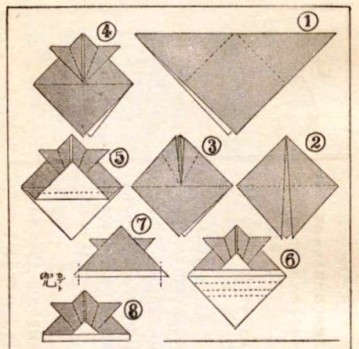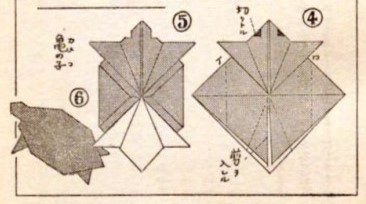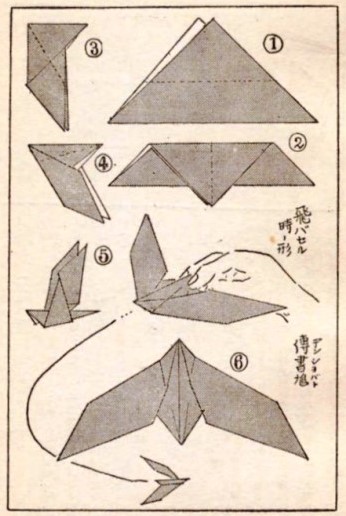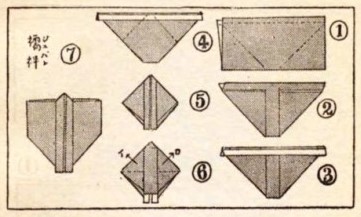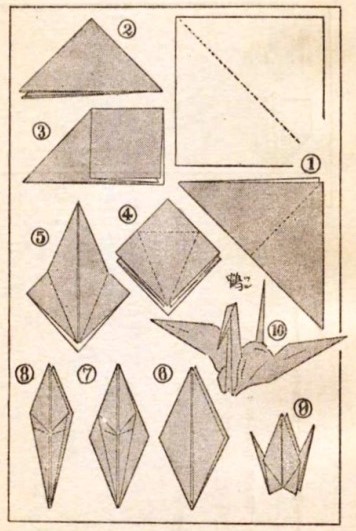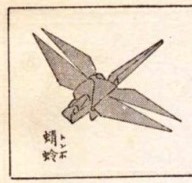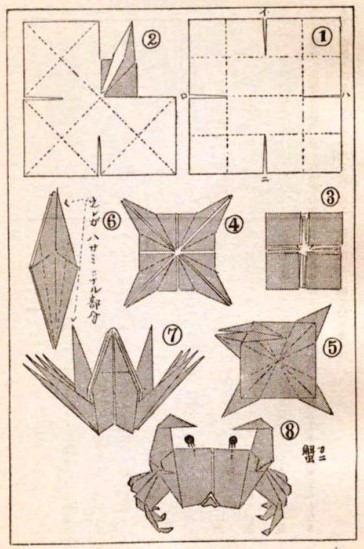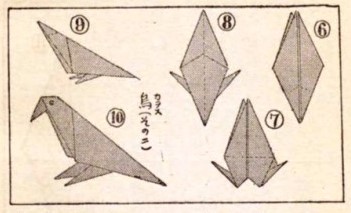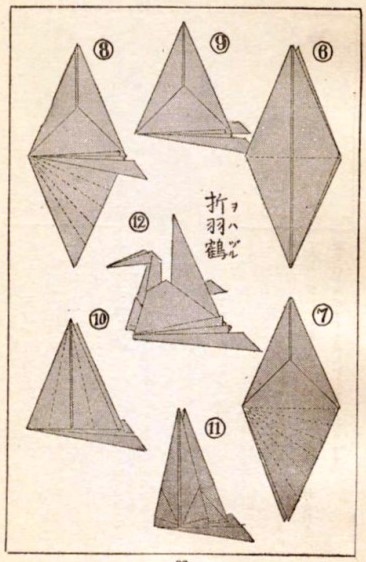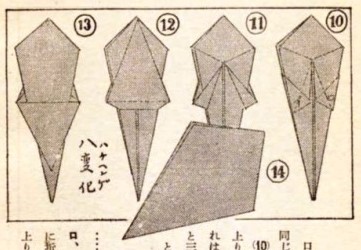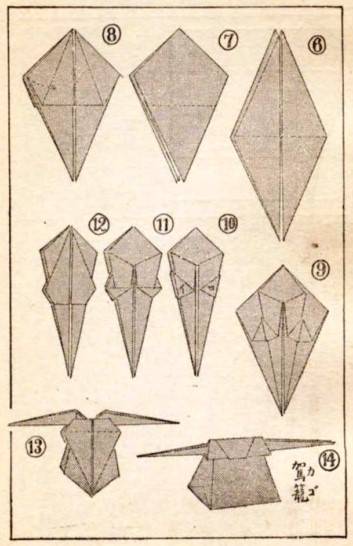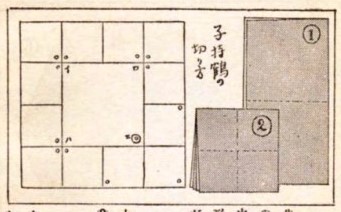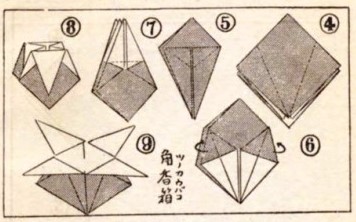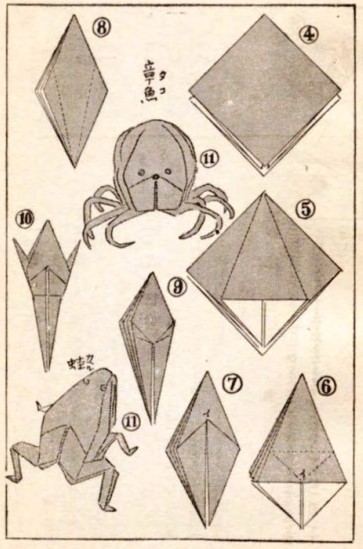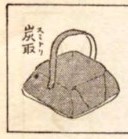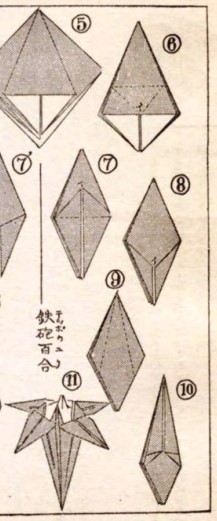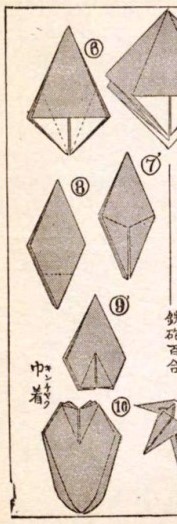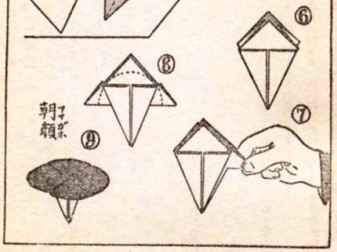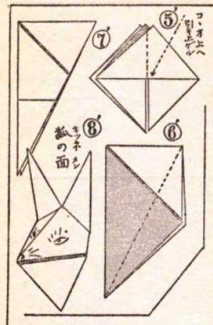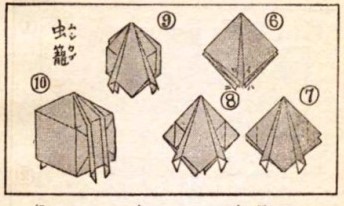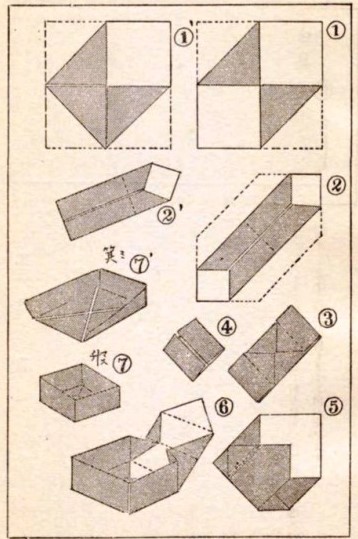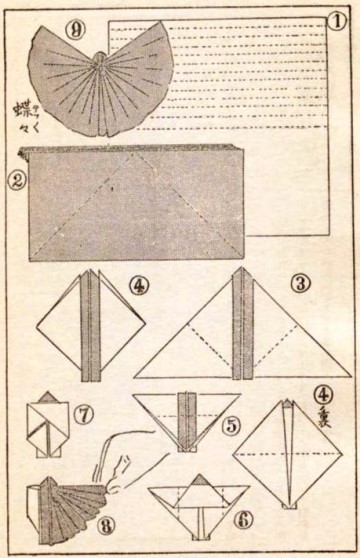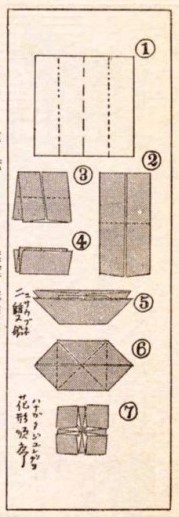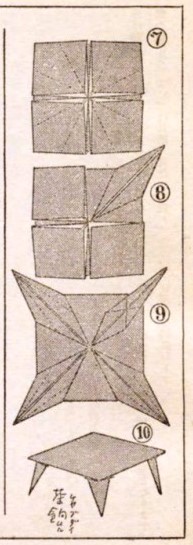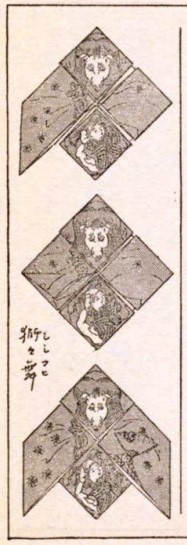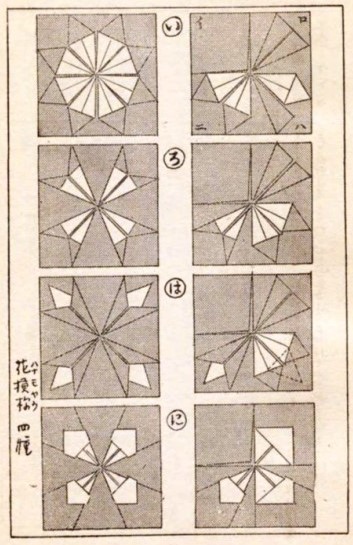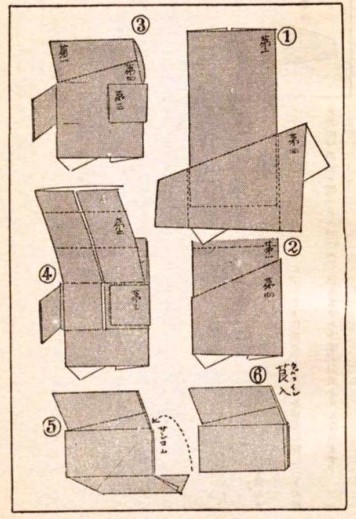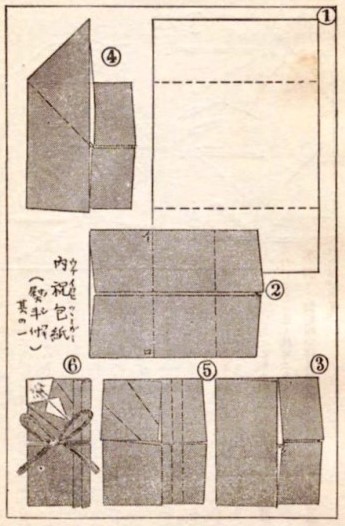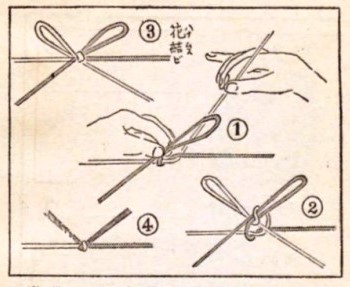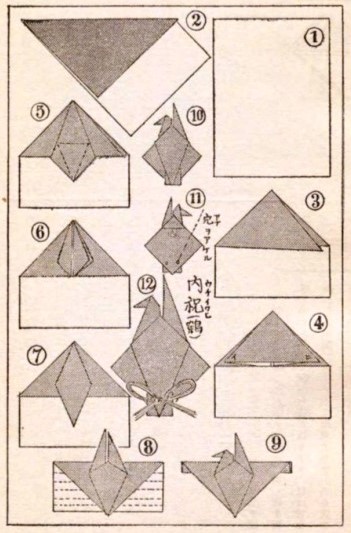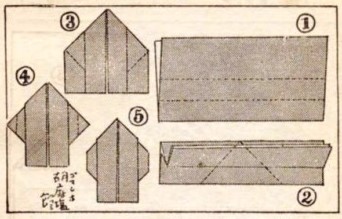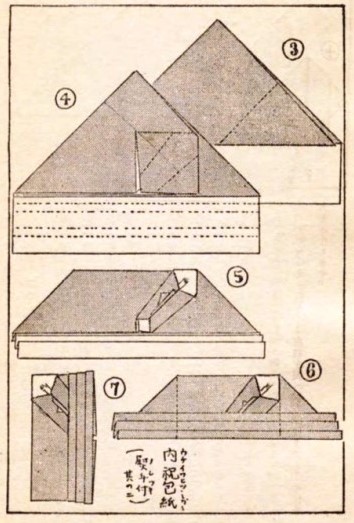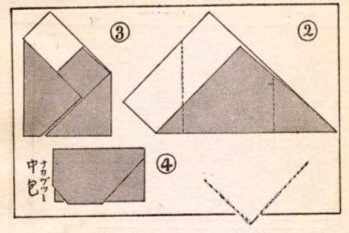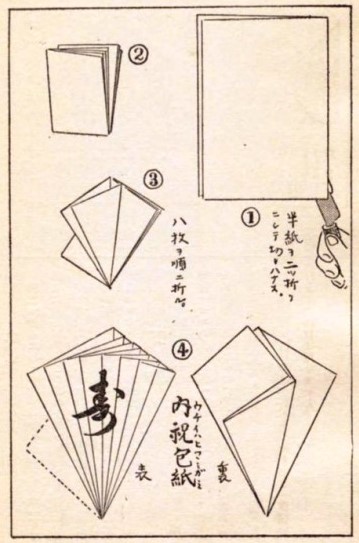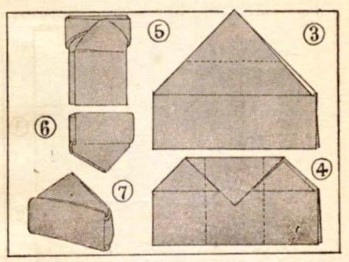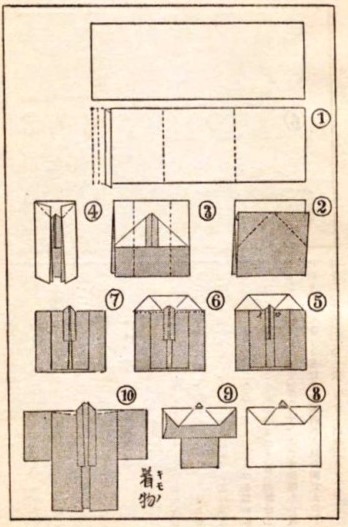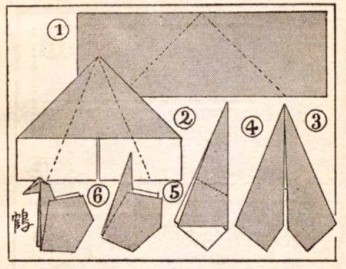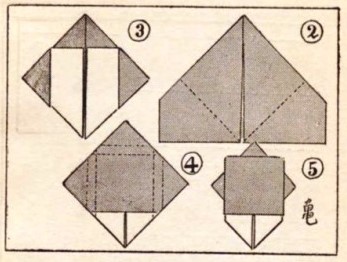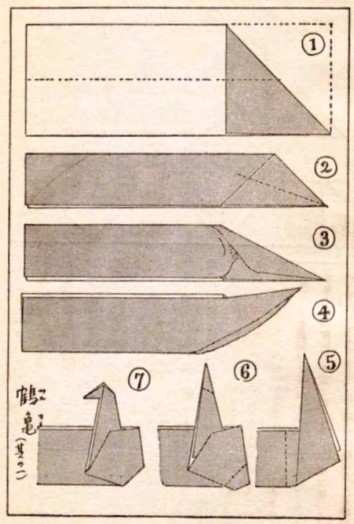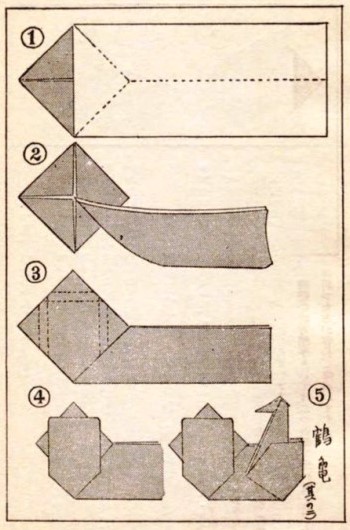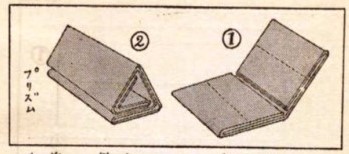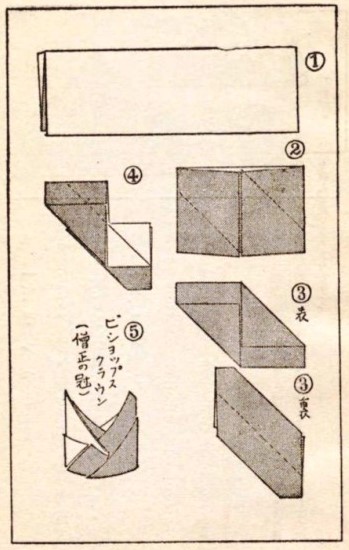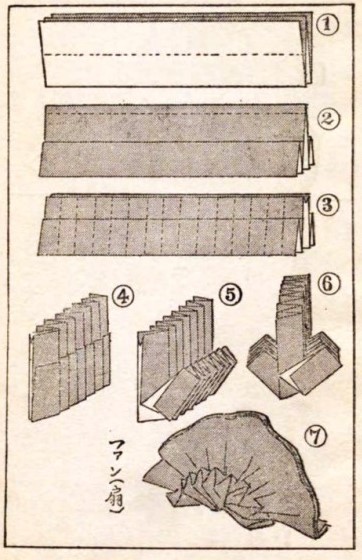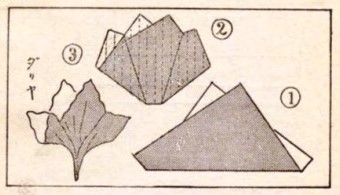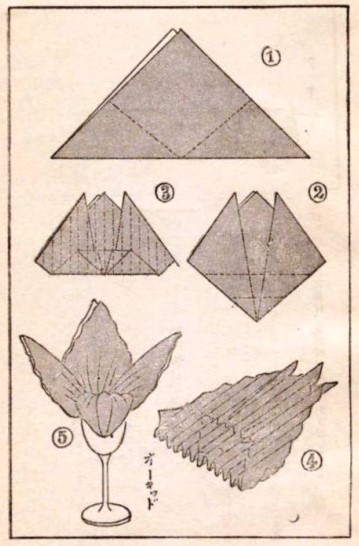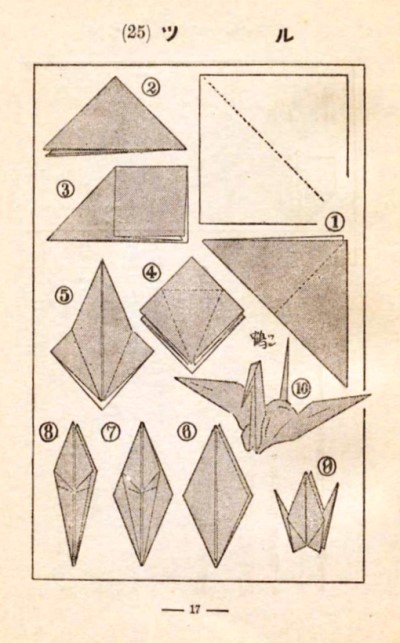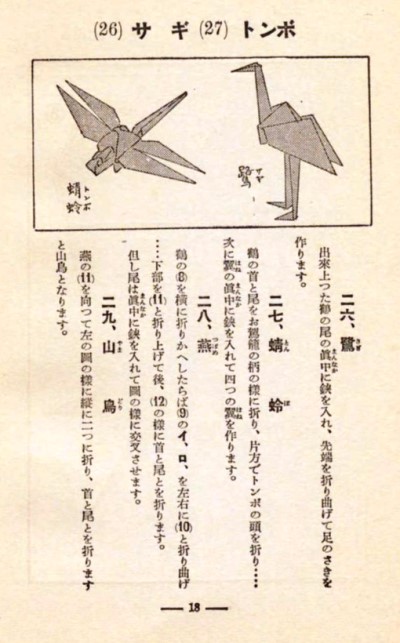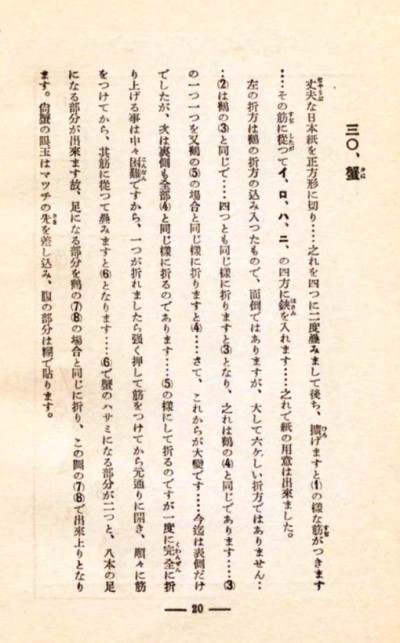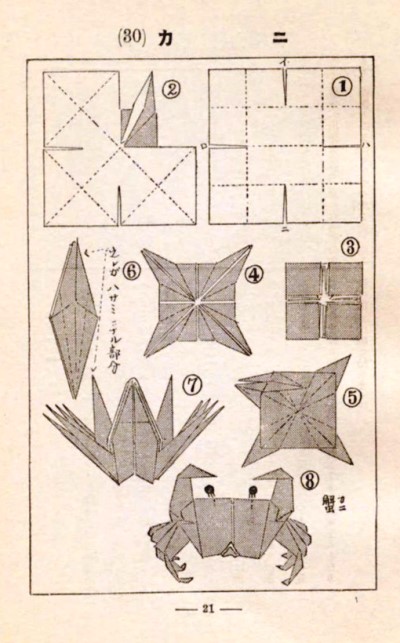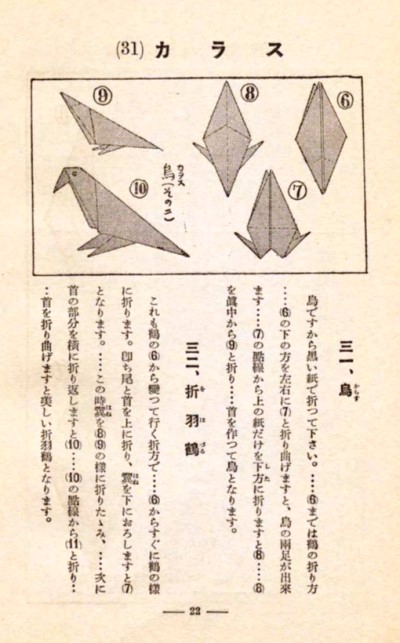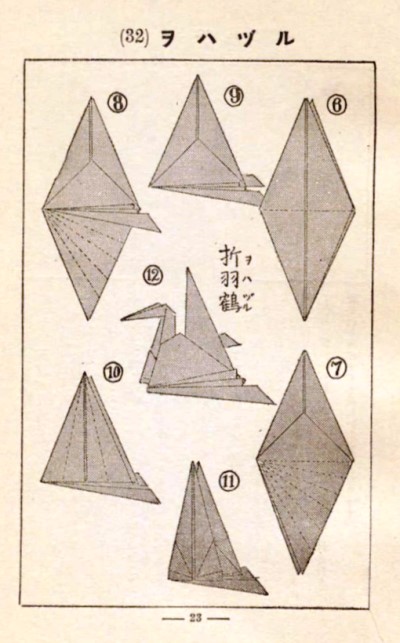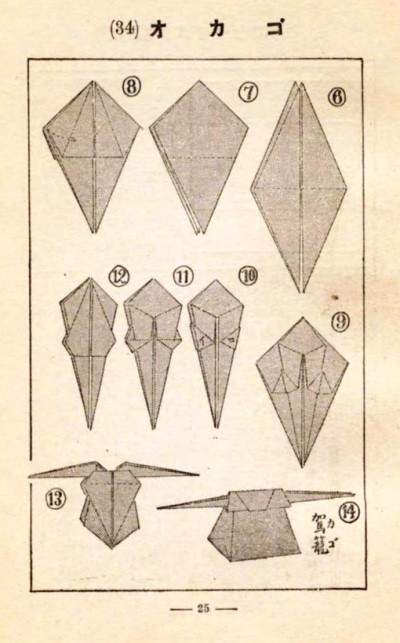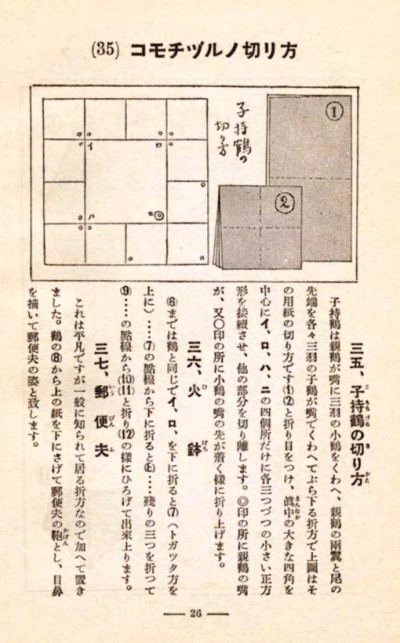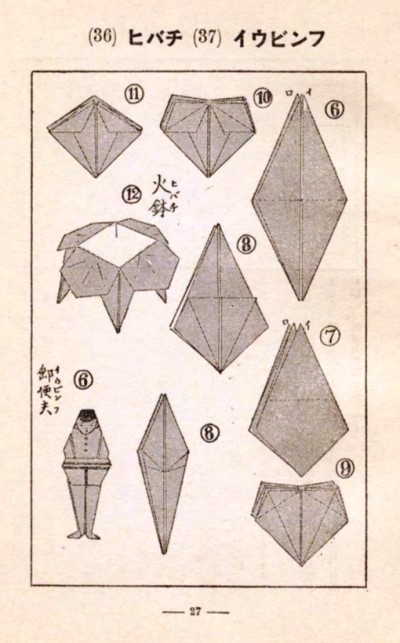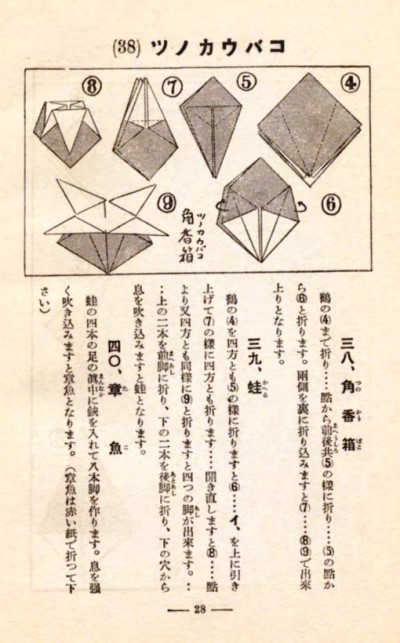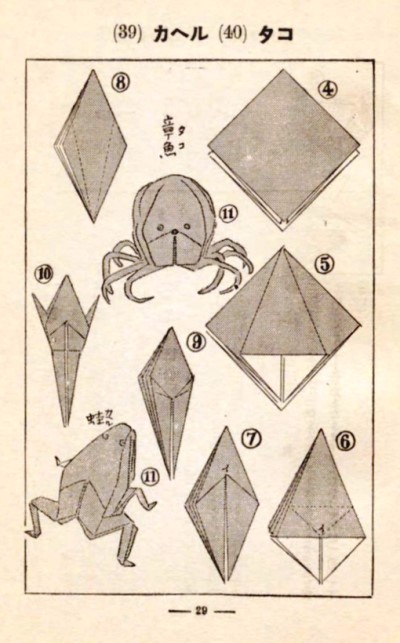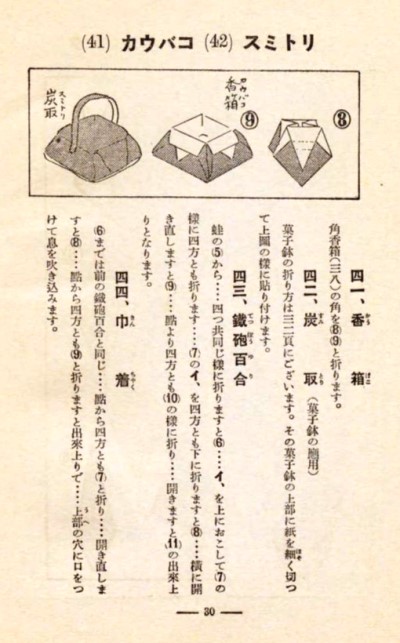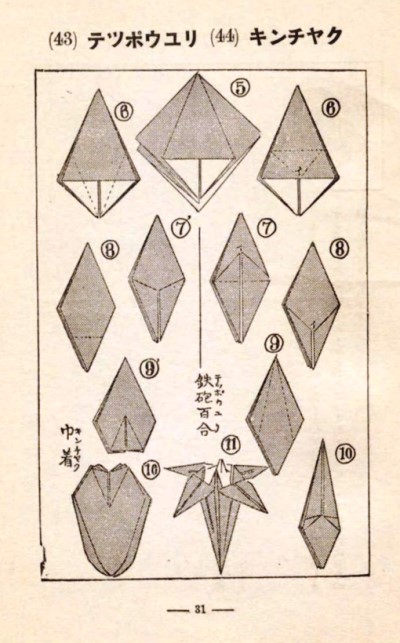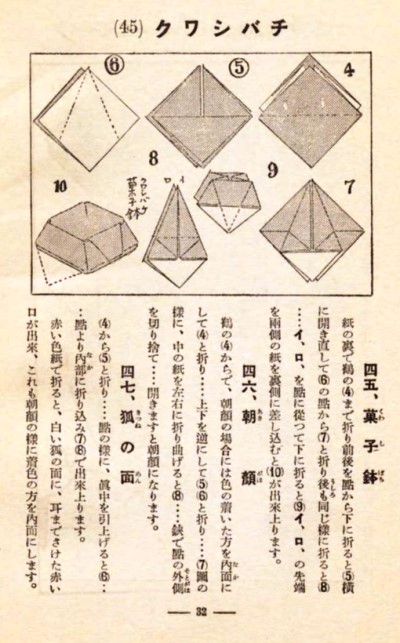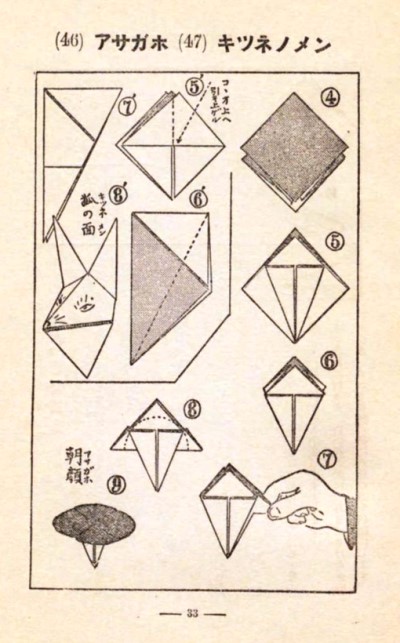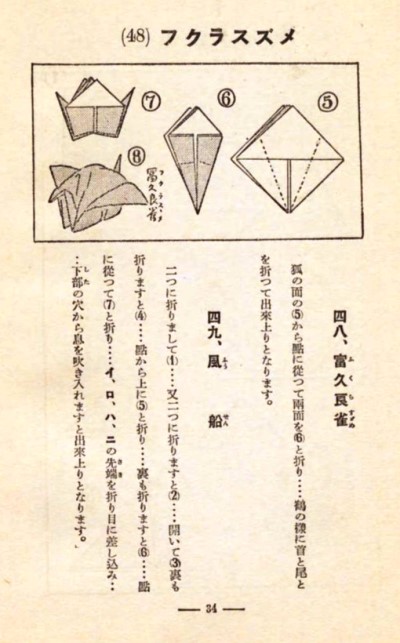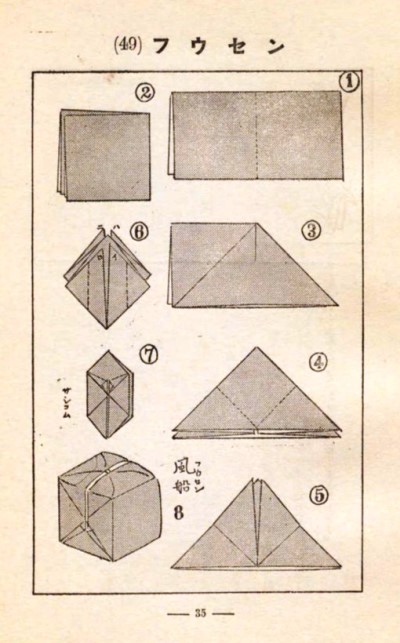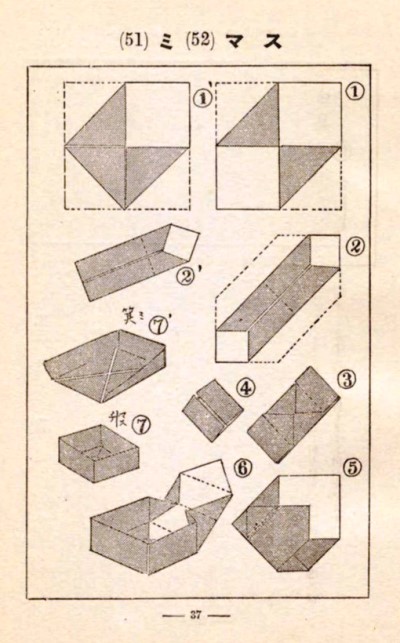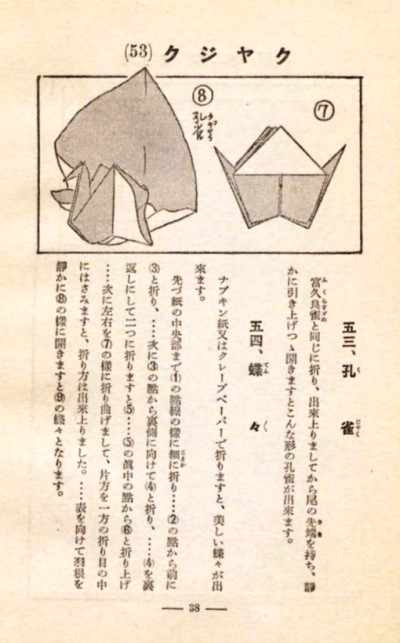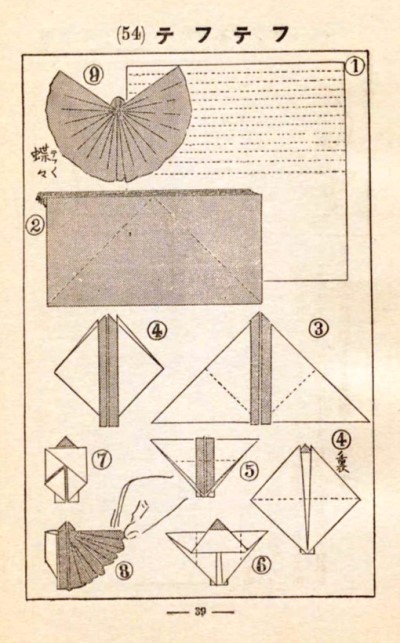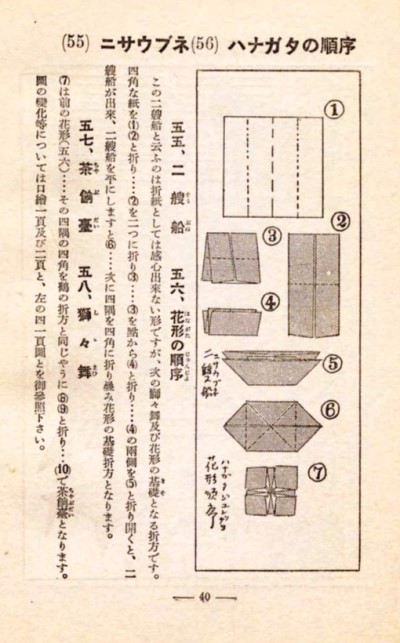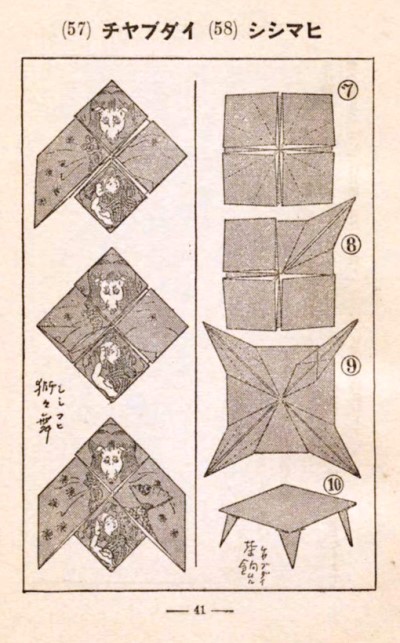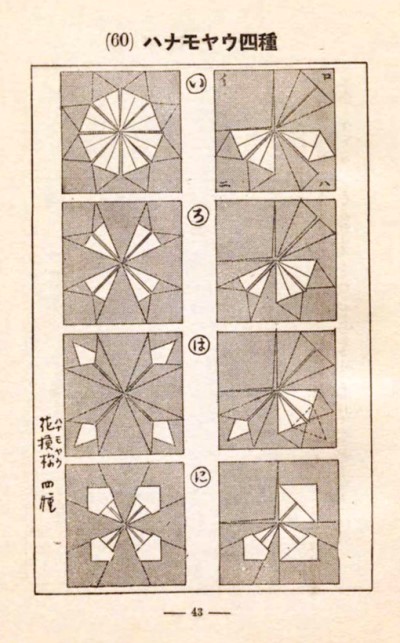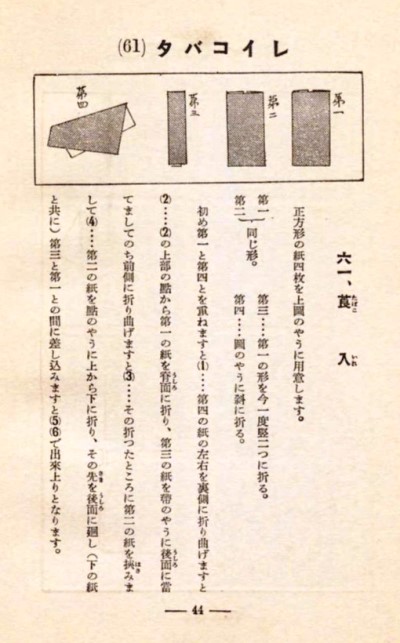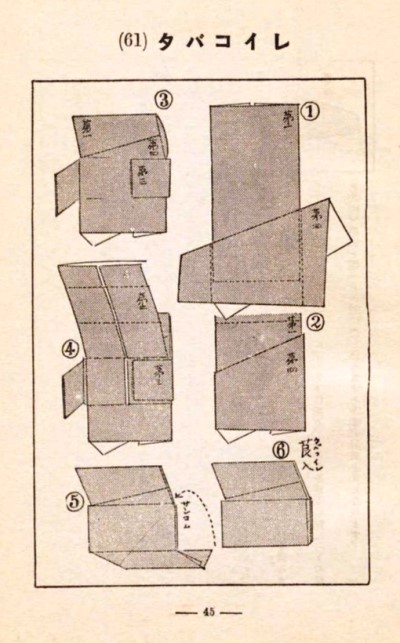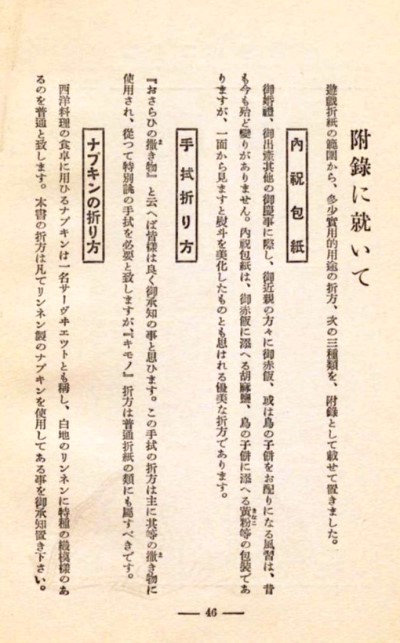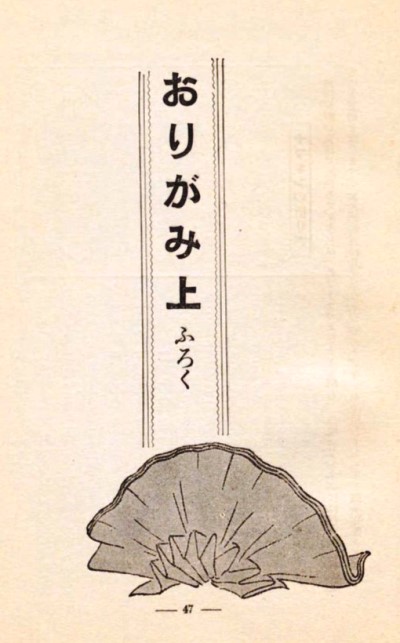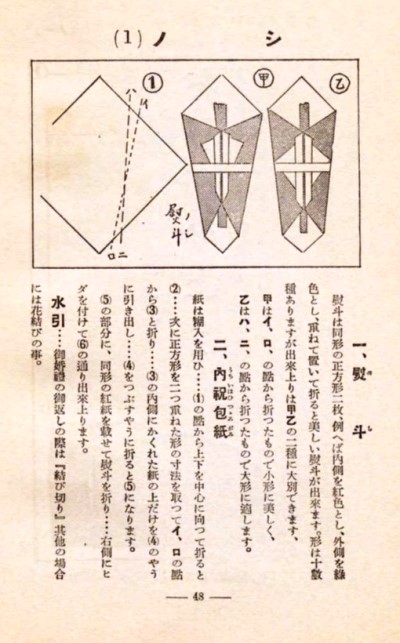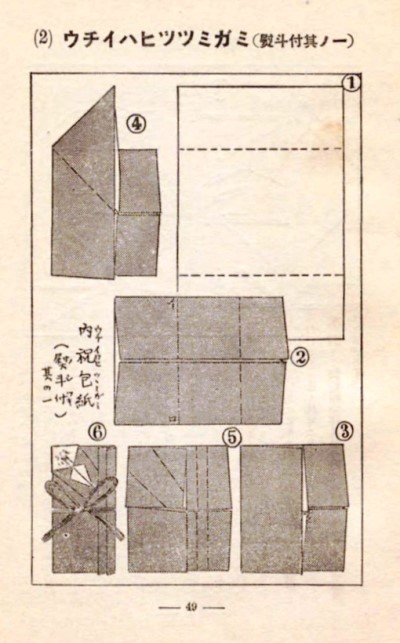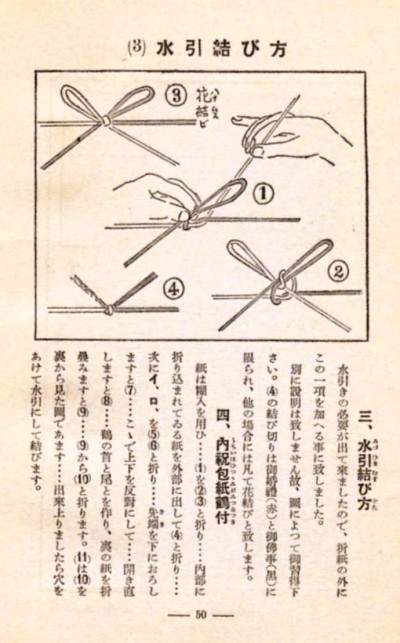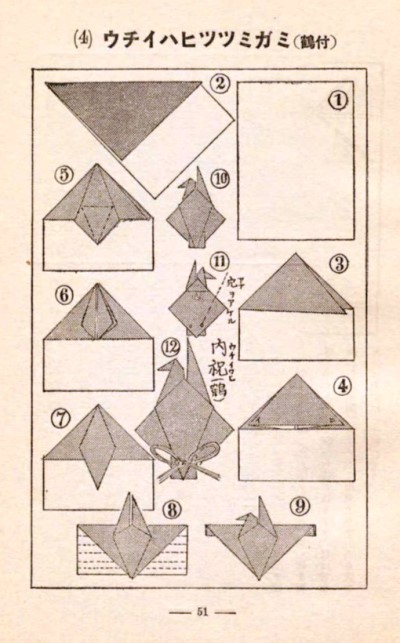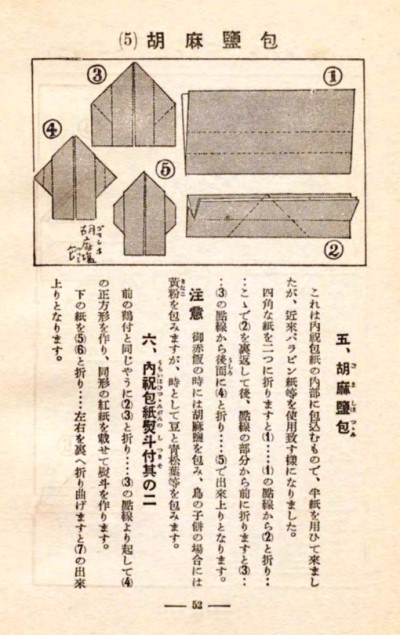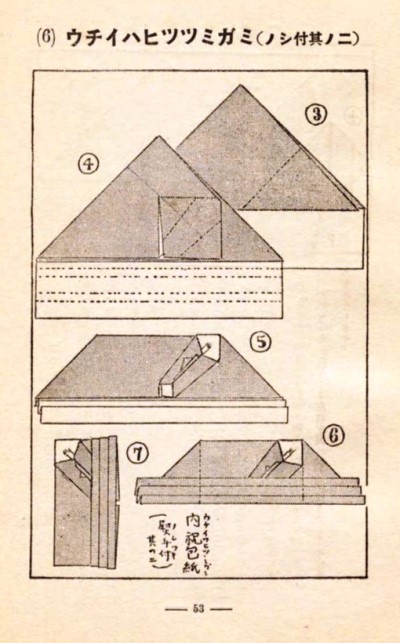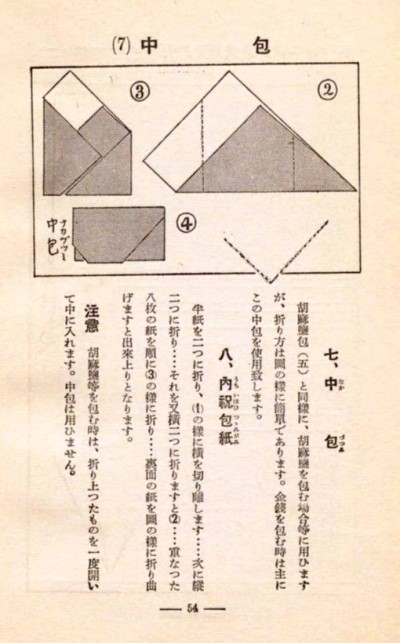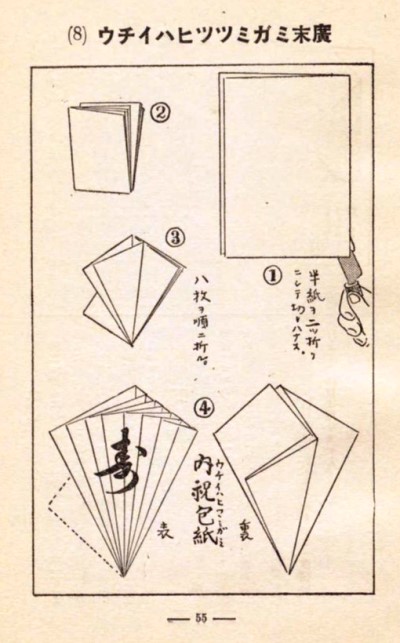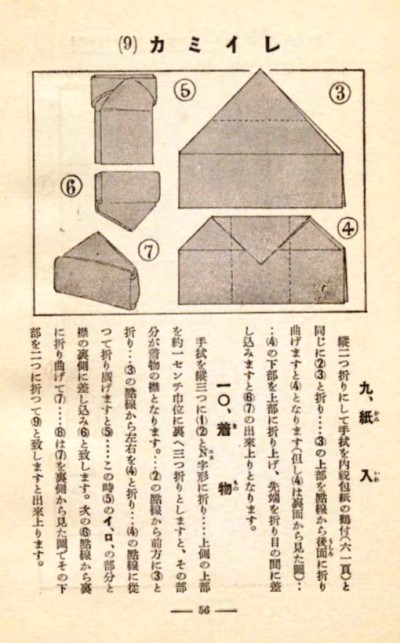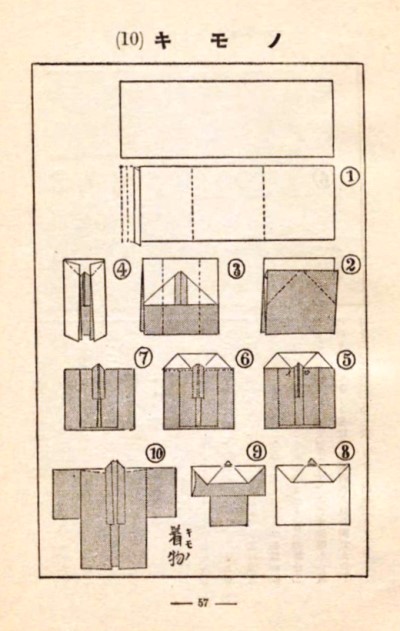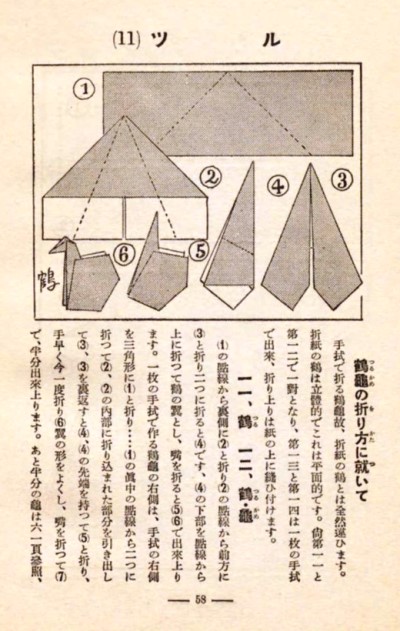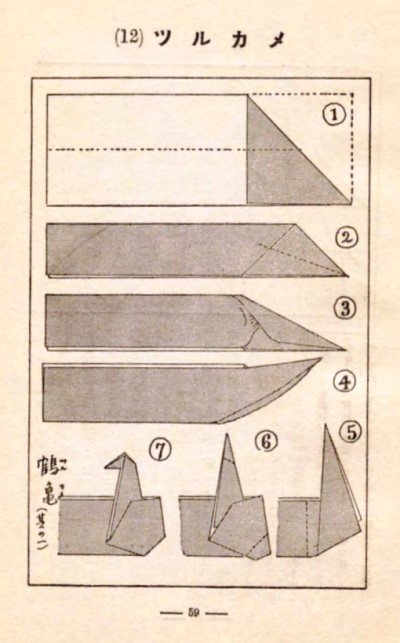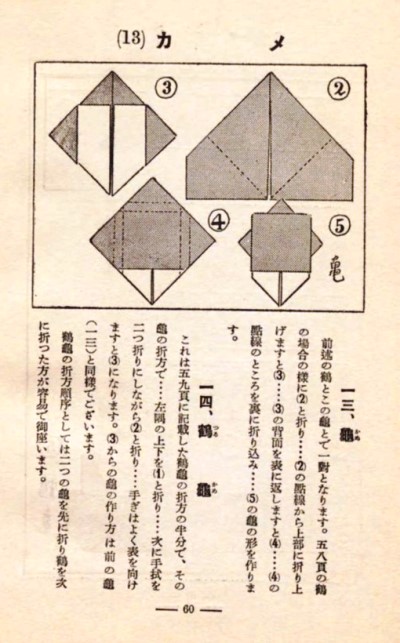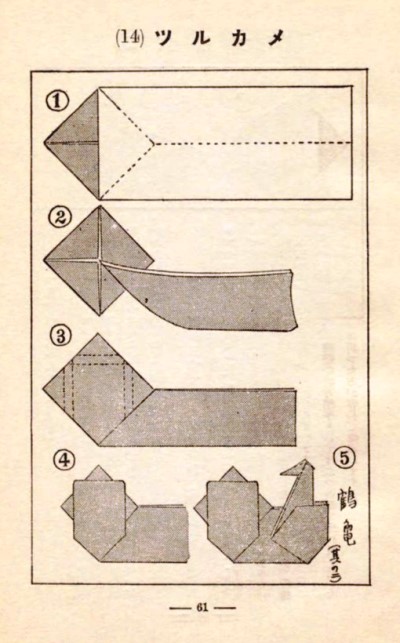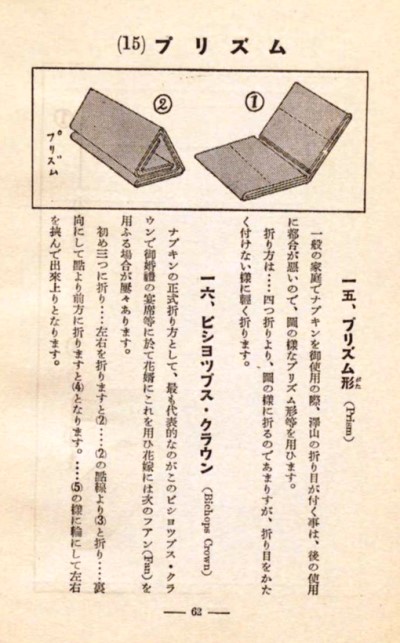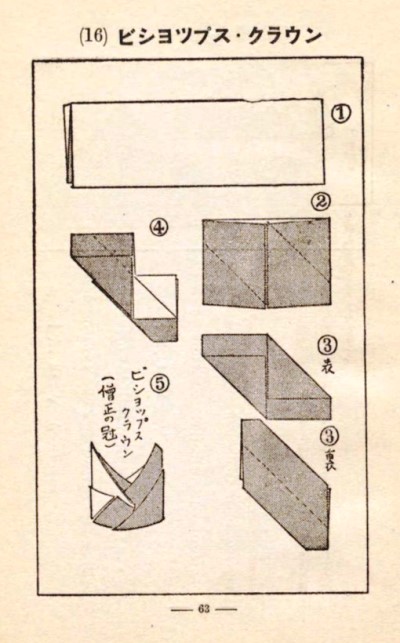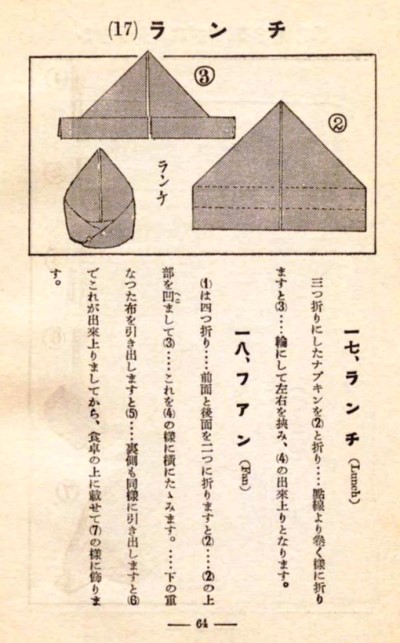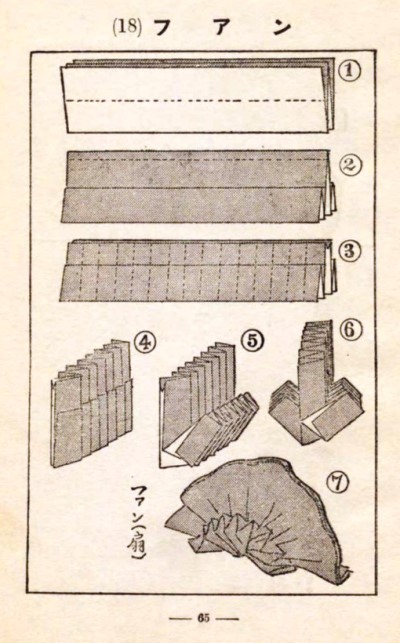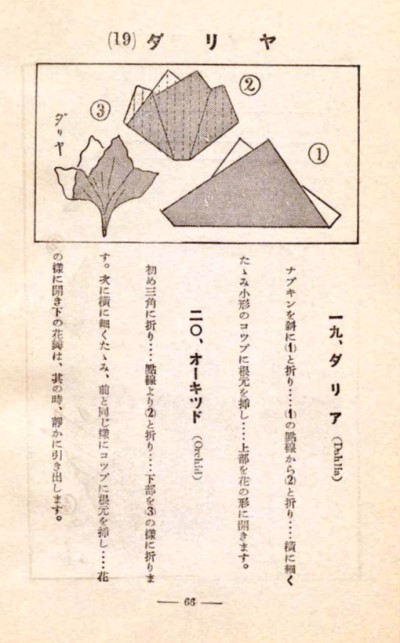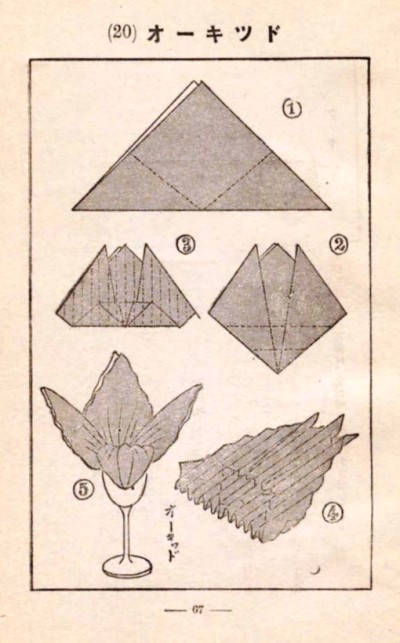| The Public Paperfolding History Project
Last updated 7/12/2024 x |
|||||||
| Origami (upper) (Part 1) by Isao Honda, 1931 | |||||||
| 'Origami
(upper)' (Part 1) by Isao Honda was published by the
Japan Toy Association in Tokyo in 1931. The lower volume
(Part 2) was published the following year. The book is
split into a main work and a supplement, which includes
some European napkin folds. In his Preface the author says, roughly, 'After drawing for several years, I initially intended to write down origami in various languages and gift this embodiment of Japanese culture to children all over the world. However, at the suggestion of the Japan Toy Association, I have now pubished a report on this subject and will dedicate it first to the teachers and mothers of our young compatriots, in the hope that it will contribute to the precious upbringing of children.' It is sometimes assumed that all the designs in this work are traditional ones collected by the author, but this is not necessarily the case. Many designs appear here for the first time, and, lacking evidence to the contrary, it is quite possible that some of these may be the author's own original designs. There are no compound representational designs in this work. The only compound design is the Tobacco Case, which is a functional design. A full low-res copy of the work can be found at the foot of this page. A high-res version can be accessed online here. ********** This work is mentioned in Gershon Legman's 'Bibliography of Paperfolding' which was published in 1952.
**********
********** Analysis The names of the designs in normal print are transcribed / translated using Google Lens. They may not be accurate ... 1, Katakate (shoulder bag) - The Shawl This is a Simple Froebelian Fold of Life but the author does not present it as such.
********** 2, Dairibina (Cut) - Hina Dolls
********** 3, Pigeon - The Dove
********** 4, Warbler - The Nightingale
********** 5, Home - The Japanese House
********** 6, Pig - The Pig
********** 7, Tram
********** 8, Piano - The Piano
********** 9, Wallet - The Simple Wallet
********** 10, Fox Mask - The Fox Mask
********** 11, Penguin
********** 12, Fur Seal - The Fish Base Seal
********** 13, (right) Crow - The Simple Crow / 14, (left) Pigeon - The Simple Pigeon
********** 15, Cicada - The Crossover Cicada
********** 16, Kabuto - The Kabuto
********** 17, Baby Turtle - The Cut Turtle
********** 18, Nagakabuto - The Party Hat
********** 19, Tahi (Seabream) and 20, Goldfish - (both) The Cut Goldfish
********** 21, Cicada - The Kabuto Base Cicada
********** 22, Plane - The Paper Dart
********** 23, Denshobato (Message Dove) - The Carrier Pigeon
********** 24, Jiyuban (the undershirt) - Jiyuban
********** 25, Tsuru - The Paper Crane
********** 26, Heron - The Cut Heron (Picture only - no folding diagrams)
********** 27, Dragonfly - The Cut Dragonfly (Picture only - no folding diagrams)
********** 28, (12) Swallow - The Cut Swallow / 29, (13) Woodcock
********** 30, Crab - The Kan no mado Crab
********** 31, Crow - The Crow with Legs
********** 32, Broken Feather Crane - The Nesting Crane
********** 33, Hachihenge (Japanese Transformable Picture Form)
********** 34, Kago - The Sedan Chair
********** 35, How to cut Komochi Crane
********** 36, (12) Hibachi - The Hibachi / 37, (6) Postman - The Postman
********** 38, Horned Incense Box - The Star-Shaped Box
********** 39, Frog - The Blow-up Frog / 40, Octopus
********** 41, Incense Box - The Incense Box Made by folding up the 'horns' of the Star-Shaped Box.
********** 42, Sumitori (basket) Made by attaching a handle to the Cake Box (see below).
********** 43, Lily - The Lily
********** 44, Kinchaku (Drawstring Bag) - The Kinchaku
********** 45, Kwashibashi - The Cake Box
********** 46, Asagaho - The Morning Glory (Cut)
********** 47, Fox Face - The Fox Face
********** 48, Fukura - The Fat Sparrow
********** 49, Balloon -The Waterbomb
********** 50, Mushikago (insect basket) - The Mushikago
********** 51, The Winnowing Tray / 52, Box - The Blintz Box
********** 53, Peacock
********** 54, Butterfly - The Pull-Out Butterfly
********** 55, Nisobune - The Double Boat / 56, Hanagata (flower shape) - The Windmill Base
********** 57, Table - The Chessboard
********** 58, Lion Dance (Japanese Transformable Picture Form)
There is more information about this folding picture form on the first two pages of the work (see below)
********** 59, Flower Pattern This is a Froebelian Fold of Beauty but the author does not present it as such.
********** 60, Four types of Hydrangeas These are Froebelian Folds of Beauty but the author does not present the as such.
*********** 61, Tobacco Case - The Tobacco Case
********** The Supplement Wrappers 1, Noshi
********** 2, Gift wrapping with Noshi (Closed Wrappers with Integral Noshi)
********** 3, Mizuhiki Knotting
********** 4, Gift Wrapping with Crane - The Crane Envelope
********** 5, Sesame Wrapper
********** 6, Gift Wrapping with Noshi (2)
********** 7, Plain Bag
********** 8, Fan Gift Wrapping
********** 9, Package for Paper
********** 10, Kimono - The Kimono
********** 11, Crane
********** 13, Turtle
********** 12 and 14, Crane and Turtle - Crane and Tortoise Designs
********** How to Fold a Hand Towel 15, Prism (in English)
********** Napkin Folds In the following section, which gives instructions for napkin folds, the names appear in the text in English as well as Japanese, suggesting that the author learned these folds during his time in the West. 16, The Bishop's Crown - The Pipe Cap
********** 17, Lunch
********** 18, Fan
********** 19, Dahlia
********** 20, Orchid
********** The Work
********** |
|||||||
















